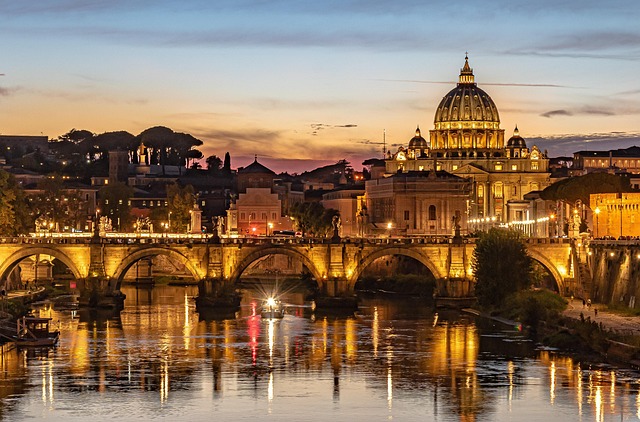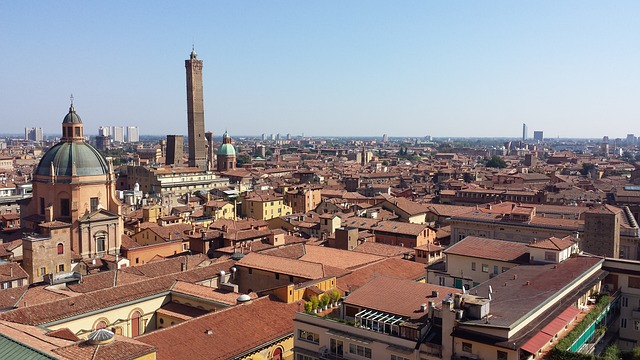Author: Cory Shilling –
This guide is for you if you’re a student who wants to travel across Italy but is concerned about the cost. Italy is a well-liked travel destination for students because of its fascinating history, stunning scenery, mouthwatering cuisine, and many cultural treasures. But, it is feasible to experience all that Italy has to offer on a budget with a little bit of preparation. In this article we provide you some tips and advice in this to help you travel across Italy on a budget.
Exploring Italy on a budget – A Student’s Guide
1. Schedule your trip for off-peak season
Firstly, the all important question: when to go? During June through August, which is considered Italy’s high season, rates for travel, lodging, and attractions are at their highest. Plan your vacation during the off-season, which runs from November to March, to save money. You’ll have a better chance of obtaining economical lodging and less expensive flights during this time because rates are lower and there are less tourists around.
=> It’s important to bear in mind that the more popular cities, like Venice, Florence or Rome have tourists all year round. That means prices are generally much higher than smaller towns or off-the-beaten track places. It’s also advisable to check out special events that are on in these cities during certain times (like Pitti fashion show in Florence or the Venice Biennale) to avoid higher prices.

2. Plan Ahead
When it comes to finding cheap vacation, preparation is key. To identify the most affordable options for travel, lodging, and activities, do some prior research on your chosen trip. Traveling off-season, when costs are cheaper, is another way to save money. Think about other lodging options like hostels, homestays, or couchsurfing. These choices can offer a distinctive cultural experience and be far less expensive than motels. Use the student discounts available for travel, tours, and attractions. Bring your student ID with you as many companies may give students discounts.
Of course you need to carefully plan your study time and course work too. If you need online help with any assignments, including nursing assignment help, take advantage of AssignmentBro so you can have a little peace of mind on your trip. Skilled writers can assist you with everything from writing your topic, to producing a paper that is free of plagiarism. If you’re feeling anxious about the written exam, think about contacting a firm that can help you with your health and safety nursing assignment. They might be able to assist you in achieving the grade you need to enrol in the nursing program of your choice.
3. Opt for Affordable Accommodation
When visiting Italy, lodging might be one of the most expensive expenses. However, there are a number of affordable lodging options, including hostels, guesthouses, and low-cost hotels. Hostels are an excellent choice for travellers on a tight budget since they provide economical dormitory-style lodging, common kitchens, and social activities. Budget hotels and guesthouses are also a wonderful choice because they offer the essentials at a reasonable cost.
4. Check out the Free Sights & Activities
Many well-known tourist destinations may be found in Italy, including the Colosseum in Rome, the Leaning Tower of Pisa, and the canals of Venice. While some of these sights can be pricey, you can admire many of them without paying for entrance tickets. Discover the free sites in Italy to save money, including the Pantheon, the Trevi Fountain in Rome, Florence Cathedral and all the beautiful squares you can imagine. Without breaking the bank, these attractions provide a look into the history and culture of Italy.
=> Check out the Best Things to do in Florence on a budget , and some Budget-Friendly Outdoor Adventures in Tuscany!

5. Use public transportation as much as you can
Italy’s public transportation is inexpensive and effective, making it a fantastic choice for travellers on a tight budget. Use the buses, trains, and trams as a substitute for a rental car or a cab. Italy’s railways are dependable, reasonably priced, and connect to the majority of the country’s major cities, making countrywide travel simple.
Insider’s tip => if you’re planning a trip to lesser touristy parts of Italy, or travel to smaller towns in the countryside, check bus routes and timetable – they are less frequent than between the major destinations.
6. Eat Like a Local
Pasta, pizza, and gelato are three of the most popular dishes in Italian cuisine. Nonetheless, eating at restaurants can be pricey. Eat like a native to save money, and check out the street cuisine and regional markets. You can choose from a wide range of street food alternatives in Italy, including arancini, pizza al taglio, and panini. Local markets also provide fresh foods including meat, cheese, and a great selection of food products at far less money than eating establishments.

7. Study a little Italian
When visiting Italy, learning a little basic Italian might be really helpful. It can assist you save money in addition to facilitating communication with the community. Italian-speaking patrons frequently receive discounts at restaurants and tourist destinations, and it can be useful when haggling over costs at nearby markets.
=> Check out the Best places to study Italian in Italy.
8. Benefit from student discounts
You are entitled to a number of discounts in Italy as a student. Student discounts are available at many sites, including museums and galleries, and they can save you up to 50% off the standard fee. Also, you can benefit from savings on lodging and public transportation. Always take your student card around with you!
9. Sign up for Complimentary Walking Tours
Numerous Italian cities provide free walking tours, which are an excellent opportunity to see the city and discover its history and culture. These guided tours are a terrific opportunity to meet other travellers and are run by knowledgeable tour guides.
=> Check out Free Tours in Florence and Free Walking Tours in Rome.
10. Choose less well-known locations
Rome, Florence, and Venice are well-liked travel destinations, but they can also be pricey. Try traveling to less well-known Italian cities like Bologna, Perugia, Padua or Palermo. These cities provide a distinctive cultural experience and are frequently more affordable than popular tourist hotspots.
=> New Rules for tourists in Italy in 2023

11. Think of a homestay
In Italy, staying with a local family can be an excellent opportunity to explore the local culture while also saving money. Homestays provide inexpensive lodging and the chance to encounter genuine Italian hospitality. Also, you’ll get a chance to practice your Italian and discover more about regional customs and traditions.
12. Make wise souvenir purchases
The best way to remember your trip to Italy is with a souvenir, but they may be quite pricey. Consider purchasing at neighborhood markets or from street vendors rather than tourist shops if you want mementos. These sellers provide distinctive and genuine souvenirs at a portion of the price of tourist shops.
=> 10 Small Gifts to buy in Florence
13. Vacationing with Friends
Taking a trip with friends can help you save money on lodging and transportation. Sharing meals and the cost of a hostel or guesthouse accommodation might save your travel expenses dramatically. Also, it’s a fantastic chance to make enduring memories with your pals.
14. Make use of the free WiFi
In Italy, the majority of cafes and eateries have free WiFi, which can help you avoid paying for data usage. Use the free WiFi to connect with relatives and friends back home rather than utilizing your data plan. Remember: hotels, hostels also usually have free WI FI, as do local libraries.
15. Be flexible while making travel arrangements
Having a flexible approach to your travel arrangements can help you find cheaper flights and lodging. Instead of traveling on the weekends, think about going during the week when rates are frequently lower. Search engines for travel can also be used to compare costs and get the greatest offers on lodging and travel.
16. Enjoy Italy’s beautiful nature with plenty of activities
At the end of the day, some of the best experiences you can have in Italy are free. Enjoy its unspoilt nature, varied landscapes, fabulous beaches for swimming or sunbathing (Italy has 7500 Kilometres of coastline!) and the idyllic countryside in Tuscany and Umbria. You’ll find dramatic scenery of the Alps in the North, and the Apennines that run along the spine of the country, with plenty of natural parks and nature reserves for hiking or cycling.
=> Top 12 Unesco Sites in Italy
=> Best Places to study abroad in Italy

To recap – Students Travelling to Italy on a budget
In summary, with some preparation and ingenuity, it is feasible to travel around Italy on a tight budget. You may take advantage of everything Italy has to offer without spending a fortune by using these suggestions and tactics. There are many ways to save money while taking advantage of all that Italy has to offer, from exploring the free attractions to dining like a native and taking advantage of student discounts.
Author’s Bio
Cory Shilling is a talented and dedicated writer who treats every writing gig as something valuable to the person who orders it. He understands the difficulty that non-ending school and college assignments present to the students, and this is why he is always keen to provide the best help. He has gained popularity with his hard work and exceptional writing skills.

